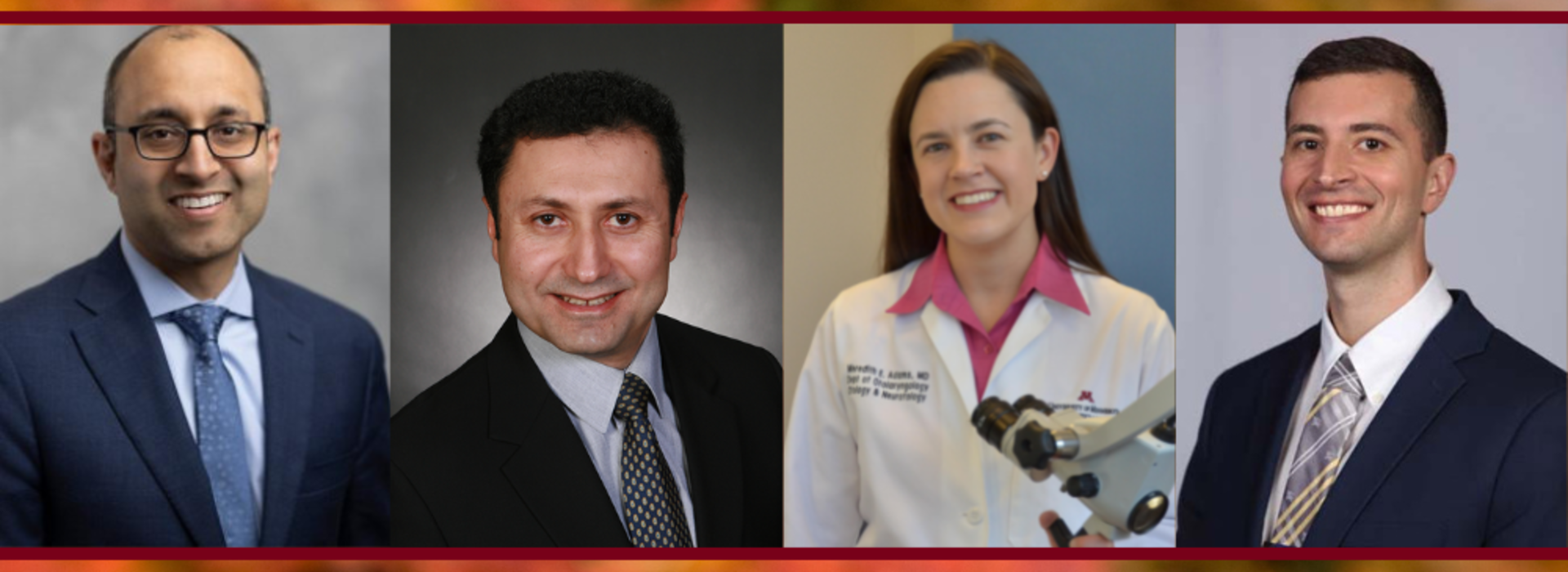
University of Minnesota Medical School Otopathology Lab receives grant from the National Institutes of Health and National Institute on Deafness and Other Communication Disorders
University of Minnesota Medical School Otopathology Lab receives grant from the National Institutes of Health and National Institute on Deafness and Other Communication Disorders
One of the grant’s key focuses will be creating new and innovative ways to prepare temporal bone specimens to increase access and push the field of otopathology forward
The University of Minnesota (U of M) Medical School’s Otopathology Lab, one of only three in the world, received a grant from the National Institutes of Health (NIH) and the National Institute on Deafness and Other Communication Disorders (NIDCD) to make new discoveries and encourage further research into human temporal bones and diseases of hearing and balance. The Otopathology Lab was founded in 1963 by Dr. Michael Paparella and is part of the Department of Otolaryngology, Head & Neck Surgery, whose current chairman is Dr. Samir Khariwala. Over the years, the laboratory published over 400 scientific articles on the topic of diseases affecting hearing and balance. The grant will help the laboratory to further expand its research on human temporal bone specimens.
According to Dr. Seb Cureoglu, Co-Director of the Otopathology Lab, human ear research is quite limited.
“The human ear is inaccessible during life, so we need to remove it after the patient is deceased during autopsies,” he explains. “There’s a significant decrease in autopsies, and also, processing temporal bones is pretty costly and requires very specific skills. Everything depends on the research happening in this lab.”
Dr. Meredith Adams, Division Director for Otology and Neurotology, says the grant’s focus is innovation, education, outreach and distributing temporal bones for research.
“We want more researchers to have access to these specimens. Expanding temporal bone research will help push the field forward to discover things that haven’t been possible yet,” she says.
The lab’s acquisition of a laser microtome, donated by Dr. Paparella, was an integral part of their grant proposal. No other temporal bone lab in the United States has this machine, which drastically reduces the time of processing temporal bones.
“This is the hardest bone in the body,” Dr. Cureoglu elaborates. “In the traditional way, to process one human temporal bone can take two years. Preliminary data showed that the laser microtome reduces the processing time from two years to two weeks and reduces the cost from $1500 for one ear to $200.”
Because the laser microtome can process bones quickly, it eliminates the concern of decalcification which often compromises important antigens and proteins inside the ear. Despite being a new, complex technology, otopathology lab Co-Director Dr. Rafael Monsanto says training technicians to use it is less time consuming than training them to process bones traditionally.
“The current processing requires the bone to be fixed to protect the delicate membranes and cellular arrangements, fully decalcified, and then embedded in plastic so they can be sectioned. The decalcification process, by itself, can take two years to be completed,” Dr. Monsanto explains. “It takes one to two years to fully train and capacitate a technician. With the laser microtome, it’s basically automatic. It eliminates the decalcification process completely.The technician just prepares the bone by fixating and embedding, then the laser microtome does everything by itself.”
Dr. Monsanto highlights that the grant supporting this rare resource creates an enormous opportunity for the field.
“This is the biggest source of information that we have on diseases that affect hearing and balance,” he says, “so this is something that’s going to help the lab a lot to continue to produce scientific information, discovering new aspects of the diseases and translating that to clinical treatments and cures.”
Through the grant, the lab is developing training scholarships and opportunities for research, in addition to their existing global otopathology fellowships.
Dr. Adams emphasizes, “We hope people will reach out and contact us if they’re interested in this training. This is a very outwardly focused grant. We’re here to facilitate questions and ideas.”
Another focus is developing a searchable, virtual otopathology lab at the Medical School, and Dr. Cureoglu encourages students to come to the lab in person if they find something interesting in the virtual lab.
Dr. Monsanto shares, “This is a very, very rare resource that people should take advantage of when they’re here at the university. It’s a great opportunity to learn more about diseases that affect hearing and balance, and we have a great team here to guide students and researchers.”
If you are interested in learning more or getting involved with the otopathology lab, visit the lab’s website. To read more about the grant acquired by the otopathology laboratory (1U24DC020851-01), visit the NIH website.